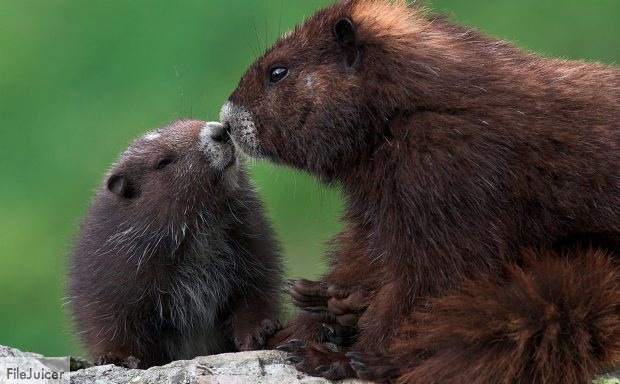By Sandra Mcculloch, Times Colonist

When they were facing extinction, the 25 or so Vancouver Island marmots remaining in the wild were cranky, uncommunicative and aloof.
That's one of the findings of research published in the latest edition of the Journal of Animal Ecology, written by biologists Justin Brashares, Jeffery Werner and Anthony Sinclair, who were based at the University of B.C. during the study.
The research, carried out from 2001 to 2005, focused on a phenomenon called the Alee effect -- the social meltdown of animal populations that sometimes occurs when their numbers are dwindling.
At the time of the research, the number of Vancouver Island marmots left was at their lowest. But thanks to a captive breeding program involving four Canadian zoos and animal rehabilitation centres, the population has since rebounded to several hundred. The Vancouver Island marmot recovery teams expect the target of 500 marmots will be reached by next summer.
"What Alee said was ... if you reduce a population, particularly for social animals, you can get to a point where their sociality breaks down and they don't get the benefit of having big families or big social groups anymore and that can put them in a spiral to extinction," said Brashares from the University of California at Berkeley, where he now works, earlier this week.
Marmots rely on each other to whistle their alarm calls, signalling predatory eagles overhead or the approach of wolves, "and this is how a marmot colony works," said Brashares. "So what happens when there's only one member in a colony? There's no one watching your back, basically."
Brashares and his team found the marmots greeted one another 10 times less than they used to and fought more frequently.
The research also showed that as the marmot numbers decreased, the numbers being eaten by predators went up. "It fits this idea that Alee had long ago that social animals get a lot of benefits by being in groups," Brashares said.
Marmots also hibernate together, which increases their chances of surviving a cold winter. It was surprising to see how far a single marmot would roam in search of other marmots, Brashares said, since other marmot species are much more social and sedentary.
While hoary marmots, found on the mainland, range over two or three hectares, the Vancouver Island marmots wander over 25 or 26 hectares at a minimum. The largest home range for a Vancouver Island marmot colony was mapped at more than 200 hectares, he said.
Don Doyle of the Marmot Recovery Team said he has tracked marmots travelling as much as 35 kilometres. He believes much of that travel could be to find a mate.
"The mountain [Brashares] was studying a lot had a very skewed male ratio," said Doyle. "If I was a male up there and there were very few females, I'd probably roam around a lot. It might have been unusual conditions or it might be because of Vancouver Island marmot habitat that these guys have to roam around a lot."
Travelling such a vast area, however, can tire out marmots and expose them to predators.
An earlier study carried out in the early 1970s didn't turn up any evidence of marmots hiking over two mountains, as Brashares and his team observed.
"What we see is the reintroduced marmots having huge travel distances -- that is quite common," said Brashares. "You're taking an adult that's been in a cage and you're sticking it on a mountain and hoping it says, yeah, this is home."
The more marmots stick together in a colony, the greater their chances they will collectively survive, said Brashares.
Brashares and his colleagues began their research when the Island marmots were on the brink of extinction and the fledgling captive-breeding program had proven slow to get going.
"The captive animals weren't reproducing," said Brashares. "That's sort of why we were brought in, why there was funding for us, because we was sort of panicking that we were going to lose the species."
It's been "fantastic" to see things turn around for the Vancouver Island marmot in the time it's taken for their work to be published, he said.
"I was able to write at the end of the paper, hey, things are actually looking good and we can now test whether they'll regain their sociality, whether they'll remember to do alarm calls," Brashares said.
Doyle remembers the marmots being silent when their numbers were low. "Now we've re-established some of the colonies to larger sizes and we're getting all kinds of whistling and normal behaviour. "If you've got more eyes out there looking for predators, it's probably a much better thing."
The team plans to release another 80 to 90 marmots born in captivity into the wild this summer.
